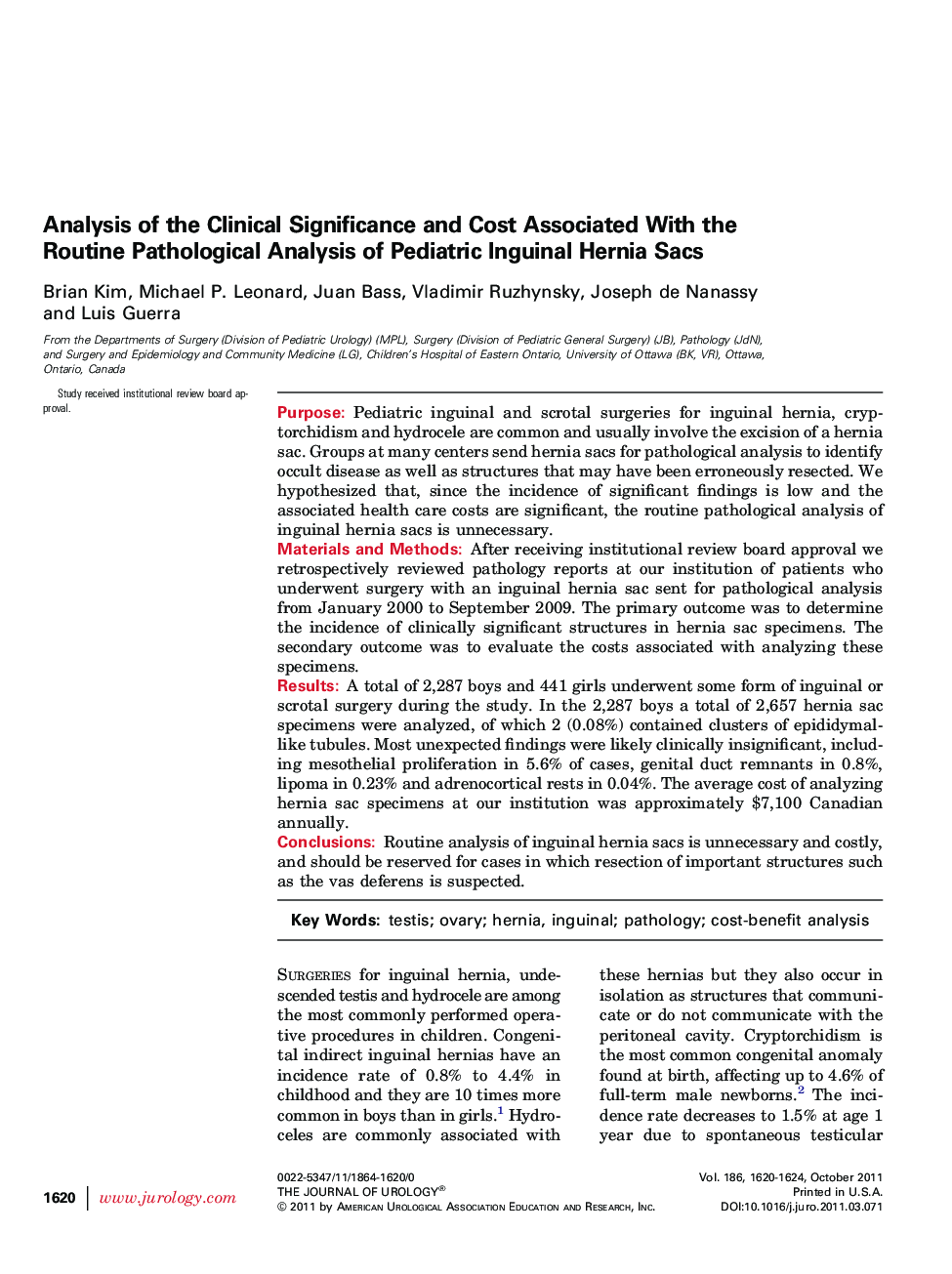| Article ID | Journal | Published Year | Pages | File Type |
|---|---|---|---|---|
| 3862920 | The Journal of Urology | 2011 | 5 Pages |
PurposePediatric inguinal and scrotal surgeries for inguinal hernia, cryptorchidism and hydrocele are common and usually involve the excision of a hernia sac. Groups at many centers send hernia sacs for pathological analysis to identify occult disease as well as structures that may have been erroneously resected. We hypothesized that, since the incidence of significant findings is low and the associated health care costs are significant, the routine pathological analysis of inguinal hernia sacs is unnecessary.Materials and MethodsAfter receiving institutional review board approval we retrospectively reviewed pathology reports at our institution of patients who underwent surgery with an inguinal hernia sac sent for pathological analysis from January 2000 to September 2009. The primary outcome was to determine the incidence of clinically significant structures in hernia sac specimens. The secondary outcome was to evaluate the costs associated with analyzing these specimens.ResultsA total of 2,287 boys and 441 girls underwent some form of inguinal or scrotal surgery during the study. In the 2,287 boys a total of 2,657 hernia sac specimens were analyzed, of which 2 (0.08%) contained clusters of epididymal-like tubules. Most unexpected findings were likely clinically insignificant, including mesothelial proliferation in 5.6% of cases, genital duct remnants in 0.8%, lipoma in 0.23% and adrenocortical rests in 0.04%. The average cost of analyzing hernia sac specimens at our institution was approximately $7,100 Canadian annually.ConclusionsRoutine analysis of inguinal hernia sacs is unnecessary and costly, and should be reserved for cases in which resection of important structures such as the vas deferens is suspected.
